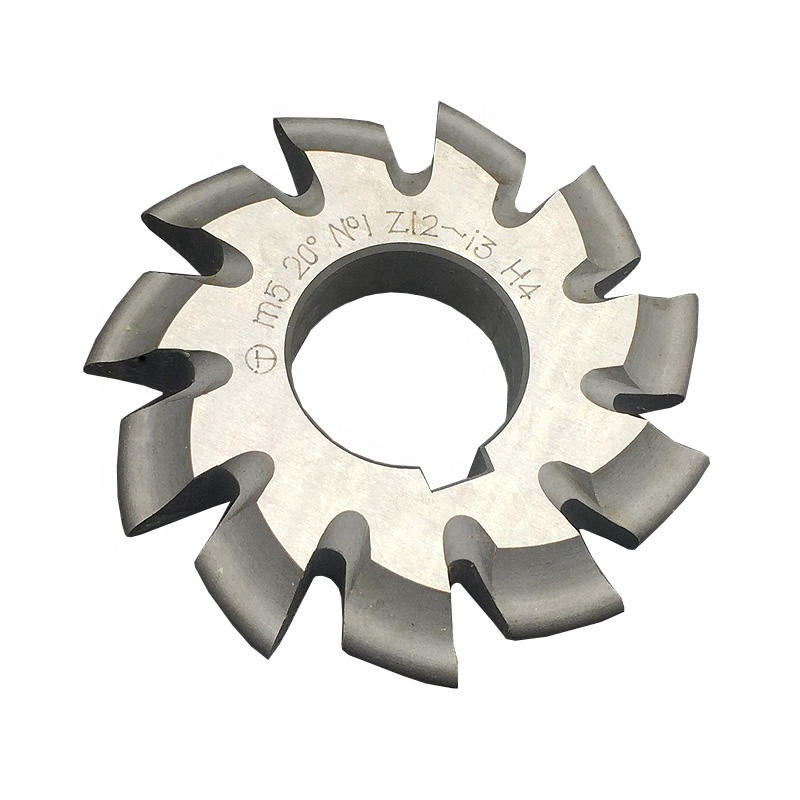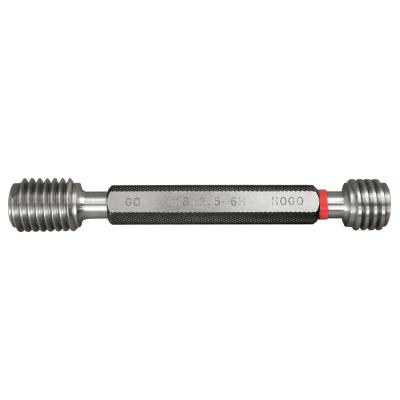NPT threading insert Factory
NPT (National Pipe Thread) threading inserts are essential tools for creating leak-proof seals in piping systems. Choosing the right NPT threading insert for your specific application involves considering factors like material type, thread size, cutting direction, and coating. This guide explores these factors in detail, providing practical insights for selecting and using NPT threading inserts effectively. This comprehensive guide equips machinists and engineers with the knowledge to confidently select and utilize NPT threading inserts, ultimately achieving reliable and high-quality threaded connections in diverse piping applications.
Understanding NPT Threading
National Pipe Thread (NPT) is a U.S. standard for tapered threads used on pipes and fittings. The taper, typically 1 in 16 (?' per foot), creates a seal as the threads are tightened. Properly cut NPT threads are crucial for preventing leaks in hydraulic, pneumatic, and plumbing systems.
NPT vs. NPTF
It's important to distinguish between NPT and NPTF (National Pipe Thread Fuel). While both are tapered pipe threads, NPTF is designed for dry seal applications and typically provides a more leak-resistant connection without the need for thread sealant.
Key Considerations When Choosing NPT Threading Inserts
Selecting the appropriate NPT threading insert depends on several factors, including:
Material Type
The material you are threading significantly impacts insert selection. Common workpiece materials and recommended insert grades include:
- Steel: Carbide inserts with PVD (Physical Vapor Deposition) coatings like TiAlN (Titanium Aluminum Nitride) are often a good choice for steel threading due to their high hardness and wear resistance.
- Stainless Steel: Opt for inserts with sharper cutting edges and coatings designed to resist built-up edge (BUE). Grades with higher cobalt content can also improve performance.
- Aluminum: Uncoated carbide or cermet inserts with polished cutting edges are generally preferred for aluminum to prevent BUE.
- Cast Iron: Carbide inserts with CVD (Chemical Vapor Deposition) coatings like TiN (Titanium Nitride) or Al2O3 (Aluminum Oxide) offer good wear resistance for cast iron threading.
Thread Size
NPT threads are designated by their nominal pipe size. Common sizes range from 1/8' to 2'. Ensure the NPT threading insert matches the specific thread size you are machining. Using the wrong size insert will obviously result in improperly formed threads.
Cutting Direction (Right-Hand or Left-Hand)
Determine whether you require a right-hand or left-hand threading insert based on the direction of thread rotation. Most applications use right-hand threads.
Insert Grade and Coating
The insert grade and coating play a critical role in tool life and performance. Consider the following options:
- Carbide: A versatile material offering good wear resistance and toughness.
- Cermet: Provides higher cutting speeds and better surface finishes compared to carbide, especially in steel.
- Coating: Coatings enhance hardness, reduce friction, and improve heat resistance. Common coatings include TiN, TiCN (Titanium Carbonitride), TiAlN, and Al2O3.
Number of Teeth
Some inserts have multiple teeth to finish an entire thread profile in a single pass or reduce the number of passes required. Single tooth inserts are more common and allow for more flexibility.
Selecting a Reliable NPT Threading Insert Factory
Choosing a reputable NPT threading insert factory is essential for ensuring consistent quality and performance. Consider factors like:
- Experience and Expertise: Look for a factory with a proven track record in manufacturing NPT threading inserts. Wayleading Tools (a leading provider of precision cutting tools, offers a range of threading inserts designed for demanding applications. Learn more at www.wayleading.com).
- Material Certification: Ensure the factory uses high-quality raw materials with proper certification.
- Quality Control: A robust quality control system is crucial for maintaining dimensional accuracy and consistency.
- Customization Options: If you have specific requirements, choose a factory that offers customization options.
- Customer Support: Reliable customer support can help resolve any issues and provide technical assistance.
Troubleshooting Common NPT Threading Problems
Even with the right NPT threading insert, problems can arise. Here are some common issues and potential solutions:
- Torn Threads: Reduce cutting speed, increase feed rate, or try a sharper insert.
- Chatter: Increase machine rigidity, reduce overhang, or use a different insert geometry.
- Poor Surface Finish: Increase cutting speed, reduce feed rate, or use a finer grade insert.
- Short Tool Life: Select a more wear-resistant insert grade or coating, reduce cutting speed, or improve coolant delivery.
NPT Threading Insert Maintenance
Proper maintenance can extend the life of your NPT threading inserts:
- Regular Inspection: Inspect inserts for wear and damage before each use.
- Proper Storage: Store inserts in a clean, dry environment to prevent corrosion.
- Correct Tool Holding: Use tool holders that provide adequate support and rigidity.
NPT Threading Insert Application Example
Consider a scenario where you need to thread 1' NPT fittings on 304 stainless steel pipes. Here's a step-by-step approach:
- Select the Right Insert: Choose a carbide insert with a PVD coating specifically designed for stainless steel threading. Consider an insert with a sharp cutting edge to minimize BUE. Wayleading Tools offers a specific grade for stainless steel application.
- Determine Cutting Parameters: Consult the insert manufacturer's recommendations for cutting speed and feed rate. For 304 stainless steel, a cutting speed of 80-120 SFM (Surface Feet per Minute) is a good starting point.
- Set Up the Machine: Ensure the workpiece is securely clamped and the tool holder is rigid.
- Apply Coolant: Use a high-quality coolant to dissipate heat and lubricate the cutting process.
- Thread the Fitting: Carefully thread the fitting, monitoring for any signs of chatter or excessive wear.
- Inspect the Threads: Use a thread gauge to verify the thread dimensions.
Conclusion
Selecting and using NPT threading inserts effectively requires careful consideration of material type, thread size, insert grade, and cutting parameters. By following the guidelines outlined in this article and choosing a reliable NPT threading insert factory like Wayleading Tools, you can achieve accurate, reliable, and leak-proof NPT threads for various applications.
| Nominal Pipe Size (inches) | Threads Per Inch (TPI) |
|---|---|
| 1/8 | 27 |
| 1/4 | 18 |
| 3/8 | 18 |
| 1/2 | 14 |
| 3/4 | 14 |
| 1 | 11.5 |
Data Source: Machinery's Handbook
Related products
Related products
Best selling products
Best selling products-
 M42 Bi-Metal Bandsaw Blades For Industrial Type
M42 Bi-Metal Bandsaw Blades For Industrial Type -
 Precision IP54 Digital Caliper With Data Output For Industrial
Precision IP54 Digital Caliper With Data Output For Industrial -
 Metric Thread Ring Gauge 6g Accuracy With Go & NO Go
Metric Thread Ring Gauge 6g Accuracy With Go & NO Go -
 MT-APU Drill Chuck Holder With Keyless Type
MT-APU Drill Chuck Holder With Keyless Type -
 HSS Module Involute Gear Cutters With PA20 And PA14-1/2
HSS Module Involute Gear Cutters With PA20 And PA14-1/2 -
 Precision Digital Caliper Of Metal Case For Industrial
Precision Digital Caliper Of Metal Case For Industrial -
 TCT Annular Cutters With Weldon Shank For Metal Cutting
TCT Annular Cutters With Weldon Shank For Metal Cutting -
 QA Grooving & Cut-Off Holder With Right And Left Hand
QA Grooving & Cut-Off Holder With Right And Left Hand -
 Keyless Drill Chuck With Heavy Duty Type
Keyless Drill Chuck With Heavy Duty Type -
 Precision Monoblock Vernier Caliper With Nib Style & Standard Style Jaws Of Metric & Imperial For Industrial
Precision Monoblock Vernier Caliper With Nib Style & Standard Style Jaws Of Metric & Imperial For Industrial -
 131PCS Thread Repair Set And Helicoil Type Thread Repair Set
131PCS Thread Repair Set And Helicoil Type Thread Repair Set -
 Inch Solid Carbide Twist Drill With Internal Coolant & External Coolant
Inch Solid Carbide Twist Drill With Internal Coolant & External Coolant










